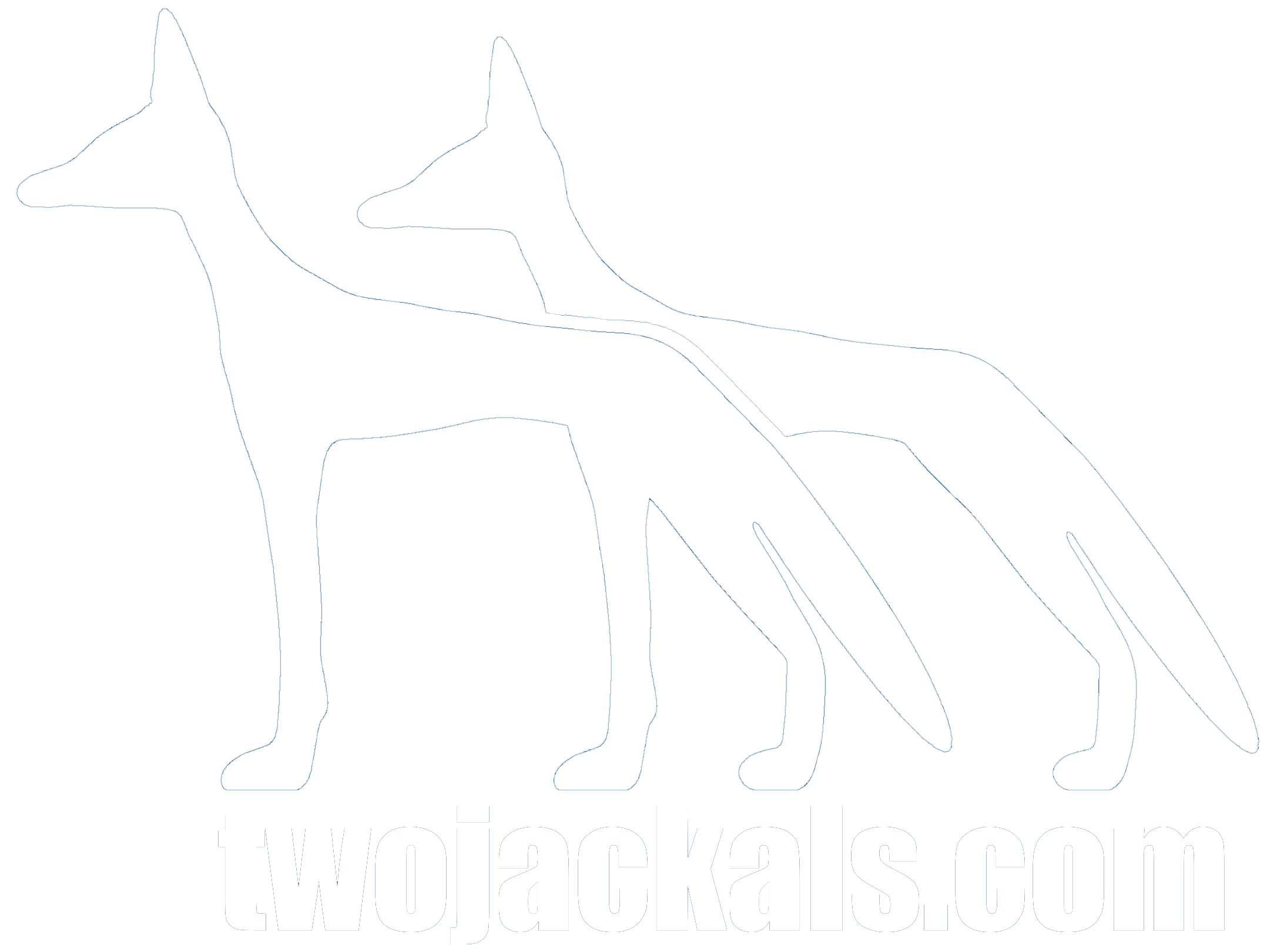
Despite a high number of misidentifications, the animal representing the Egyptian concept of ‘jackal’ (s3b, sꜢb, or sAb) that I find to be the closest match as a whole would be the Silverback / Black-backed Jackal (C.mesomelas), pictured to the right. Its lanky appearance, tall ears, and bushy tail combine as common features of what we typically see in Wepwawet imagery. This however is followed up more closely, and perhaps with more evidence will overtake my thoughts on the animal, by C.aureus lupaster (an animal with jackal and african wolf features).
I know there is a lot of research by various authors, and a lot of disputes, debates, and arguments on the topic, but this was, is, and will continue to be this author’s number one choice of imagery for the sAb animal aside from the idea of a composite creature (which may in fact be more likely).
Additional identifications include the Golden Jackal or Asiatic Jackal (Canis aureus) — much more wolf-like in appearance — as well as the African golden wolf (Canis Lupaster), which can complicate the mystery of Wepwawet’s animal form in particular as we attempt to dispel the myth of the wolf link
While Wepwawet is sometimes closely interpreted to be represented by the wolf typically due to the (mis)interpreted-grey color scheme, the sheer range of various canid species in Egypt, including the possibility of inter-breeding between species, suggests it is more difficult to pinpoint than by color alone. Ann Pouls Wegner (Wepwawet in Context) has spoken about “… the presence of a species of small desert wolf in north-eastern Africa that shares attributes of both c. aureus and c. lupus lupaster, which has been tentatively called canis aureus lupaster. That species exhibits extremely large ears, as well as a long bushy tail and the elongation of the neck and legs that are typical of Egyptian representations of Wepwawet.” That is to say, a species of animal which shares the characteristics both of jackal and wolf (or other canid), though in examining such possibilities as a whole, we need to be aware of the genetic profiles of such animals and their biological ability to produce offspring; various kinds of canid species will have chromosomal differences preventing fertility cross-species.

We do have DNA arguments and analysis as well for a “wolf” link being more plausible, and it is fair to present both sides. In 2011, a study was published called “The Cryptic African Wolf: Canis aureus lupaster Is Not a Golden Jackal and Is Not Endemic to Egypt“. In this study, the authors have concluded the “Egyptian jackal” belongs “within the grey wolf species complex, together with the Holarctic wolf, the Indian wolf and the Himalayan wolf.”
Still, the idea of something closer to a jackal/wolf hybrid, or at least something outside of the range of tunnel-visioning Jackal species alone, may possibly make our own modern, or western, idea of dog, wolf, jackal, or other canid species fall entirely short of describing what animal did in fact represent Wepwawet (or other Jackal Gods) in the eyes of the ancient Egyptians. We may in fact miss the mark entirely by using modern incarnations of jackals and wolves overlaid onto a landscape of antiquity. In fact, the word originally and traditionally used to describe ‘jackal’ in ancient Egypt, ‘sAb‘, can most likely references a number of canid-type species rather than one particular taxonomy.
What we can say with significantly more certainty is that it is unlikely that Gods such as Wepwawet and Anubis were represented by separate animals, although the idea tends to be confounded by the names of the origin-cult cities: Wepwawet at Zauty/Saiut/Asyut (Greek:Lycopolis or the city of the wolf, Kemetic: alluding to guardianship of the Northern ways) vs. Anubis at Saka/Hardai (Greek: Cynopolis or the city of the dog); however, it was the wolf interpretation that may have led to the Greek Lycopolis label to begin with, and it remains the Greek label (not an Egyptian label) in specific. Still, even if we side with the wolf, the idea of ‘wolf’ is still more closely associated with a ‘wild dog or other canid’, and not with the North American idea of ‘wolf’.
It may in fact be more accurate to refer to the jackal symbolism similar to that of the ‘Set animal’, which is why I’ve referenced the idea of a ‘sAb animal’. Whether it be a jackal, wolf, or something in between, the wolf-esque imagery as well as other grey/white/off-black imagery used in modern practice for Wepwawet symbolism is completely a personal choice at this stage, not a historical one.
